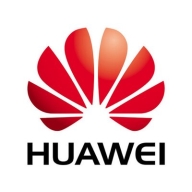

Huawei Ethernet Switches and Meraki MS Switches are network hardware products competing in the enterprise market. Data shows Huawei Ethernet Switches have a pricing advantage, while Meraki MS Switches are preferred for their advanced features.
Features: Huawei Ethernet Switches offer robust network management, versatile usage across multiple scenarios, and scalability without extra fees for additional features. Meraki MS Switches feature easy cloud management integration, simplified configuration and monitoring, and excellent remote management capabilities.
Room for Improvement: Huawei could improve the complexity of its deployment process and provide more intuitive user interfaces. Additionally, enhancing its cloud management capabilities and integration could broaden its adaptability. Meraki MS Switches could be improved by lowering costs and offering more flexible pricing models. They could also enhance offline configuration options and further develop advanced automation features for better customization.
Ease of Deployment and Customer Service: Huawei's deployment can be complex, but it provides strong technical support, which is beneficial. Meraki excels in deployment, with cloud integration cutting setup time significantly. The online resources stretch customer service efficiency and make deployment straightforward.
Pricing and ROI: Huawei Ethernet Switches provide a cost-effective setup, offering affordability. However, Meraki MS Switches deliver greater operational efficiency, providing a higher ROI over time despite their initial higher cost.


Meraki MS Switches are first-line cloud-managed access and aggregation switches that combine the benefits of cloud-based centralized management with a reliable access platform. With cloud management, thousands of switch ports can be configured and monitored instantly over the web.
Meraki MS Switches Features
Meraki MS Switches have many valuable key features. Some of the most useful ones include:
Meraki MS Switches Benefits
There are many benefits to implementing Meraki MS Switches. Some of the biggest advantages the solution offers include:
Reviews from Real Users
Meraki MS Switches is a solution that stands out when compared to many of its competitors. Some of its major advantages are its accessibility, application visibility, and flexibility features.
Jóhann T., IT Manager at Sund Upper Secondary School, says, “Accessibility is what I find most valuable in Meraki MS Switches, because I'm able to check things and see if they're working, without being on-site at all times.”
A Senior Network Engineer at a tech services company mentions, "The top feature of Meraki MS switches for me is Layer 7 application visibility. Another positive in general is that you don't need to set up a console to the switch itself; it dials into a single dashboard where you can completely manage all your network devices."
John M., user at Baseline Consulting, LLC, comments, "I like the flexibility of the Meraki firewall. It gives you the ability to lock things down. Having multiple VLANs is helpful for the switching infrastructure and firewall. It's crucial when you have a public-facing VLAN, a private-facing VLAN, and a secure VLAN."
PeerSpot user William M., Consulting Engineer at IV4, expresses, "It is easy to deploy, maintain, and update. It has been trouble-free so far. I am still a Cisco command-line bigot, but the web interface makes it a lot easier for our help desk to interact with a client. When the clients call in and say that they aren't able to connect, it takes the help desk 10 minutes or less to look at everything in the enterprise or location. They can look at the firewall, switches, or access points in the dashboard. That's why I like the dashboard."
We monitor all Ethernet Switches reviews to prevent fraudulent reviews and keep review quality high. We do not post reviews by company employees or direct competitors. We validate each review for authenticity via cross-reference with LinkedIn, and personal follow-up with the reviewer when necessary.